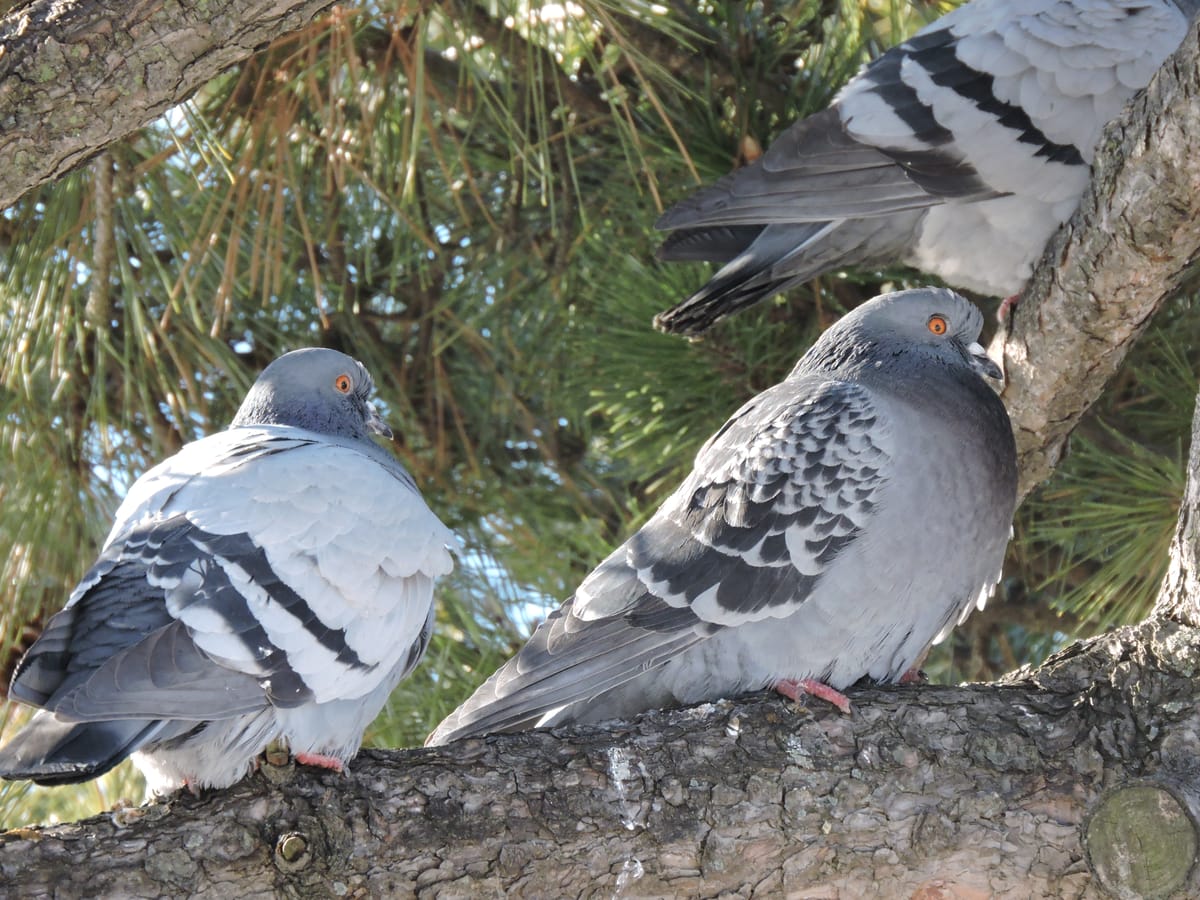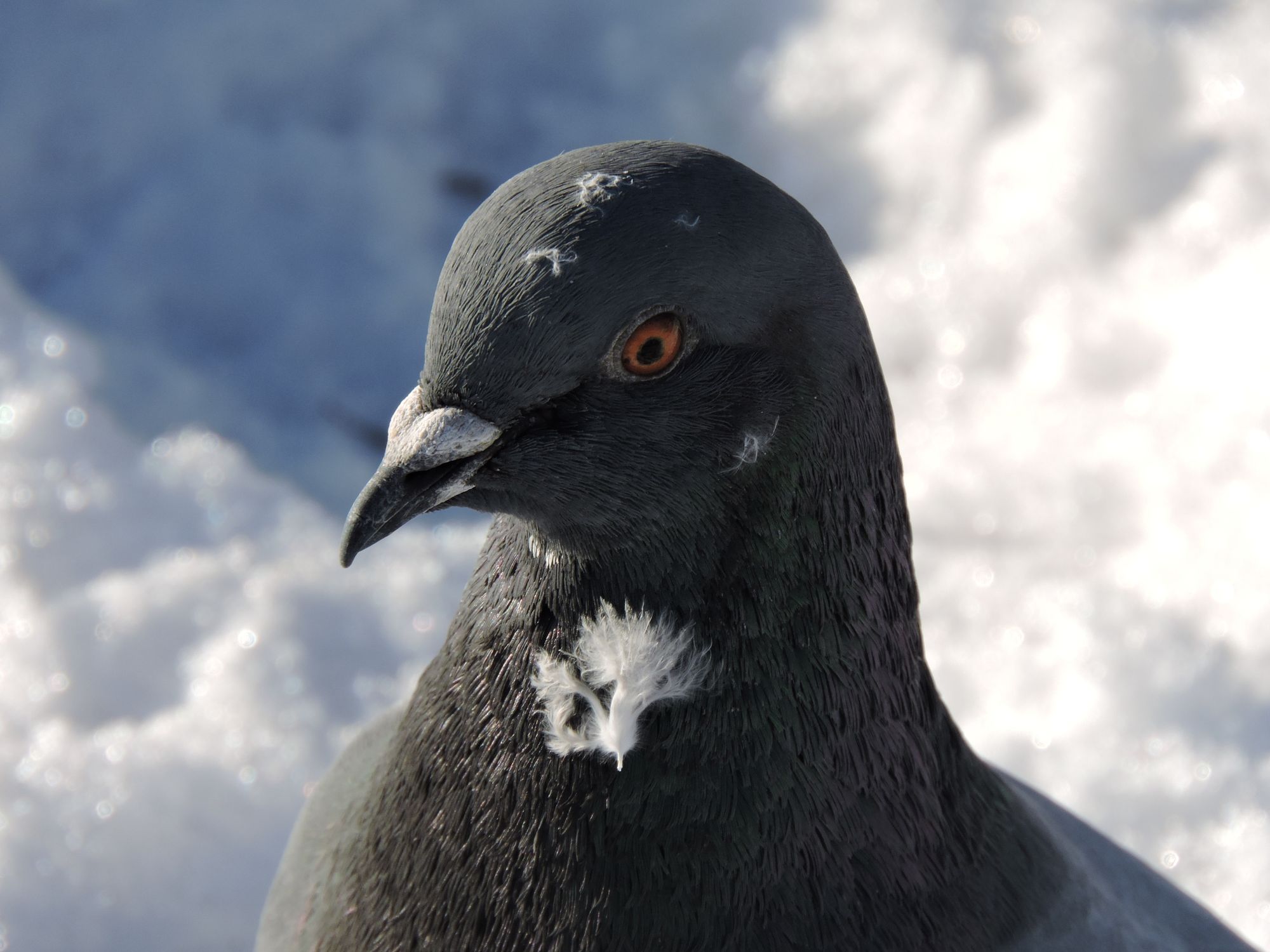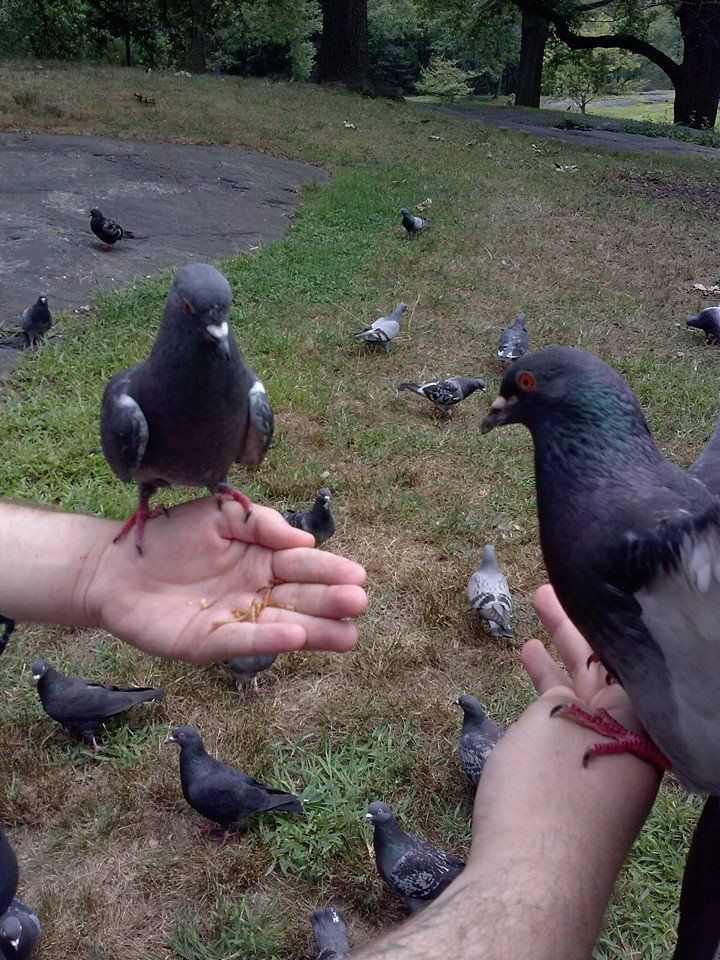In Defense Of Pigeons: Our Wildlife Expert Daniel Frazer Weighs In


You’d be hard pressed to walk a street in Brooklyn and not come across a few pigeons. These chunky crumb peckers have become so built into the urban landscape that even those who (misguidedly!) hate them would surely wonder what’s going on if they didn’t see any.
Have you ever wondered how this bird of Northern African and Mediterranean descent — the most intelligent and wide-spread member of the avian kingdom — wound up on Bay Parkway?
Read on to learn why you should embrace our most common avian neighbor.
Where did they come from?
The simple answer to the origin of pigeons is their escape from farm settings when brought to North America around the 1600s. Pigeons, also known as “rock doves,” had the distinct honor of being lauded as pets, game, and excellent sources of fertilizer (thanks to their droppings). However, escape-proof coops for pigeons are hard to make, and these extremely prolific breeders were able to quickly take advantage of the environment and quickly set up wild colonies.
Another major source of how we got pigeons — particularly the variety in their plumage colors and patterns — is through the past centuries huge popularity with pigeon racing.
Pigeon racing is a sport that has origins dating back as far as the time of the ancient Egyptians but was popularized in Europe during the 1800s. European sportsman took advantage of the pigeons mysterious ability to return to their home-roost even if released from a significant distance away and they began selectively breeding them for color, speed and body shape.
This ultimately led to an explosion of pigeon breeds and many were brought to North America for racing. As recently as the 1970s, Bensonhurst mobster Anthony “Old Man” Spero was known to race pigeons on his Bath Avenue rooftop — to the point that feds suspected him of using the birds to transport messages to his henchmen.)As it happens, some pigeons eventually escaped or chose not to return to racers and the gene pool was further diversified with selectively bred pigeons.
Observing your local pigeons, you will quickly see no two pigeons are exactly alike and that our local pigeons range from nearly coal black to a bright salmon pink.
What makes a pigeon?

While lumbering and chunky on the ground with an almost chicken like gait, pigeons explode into the air graceful as falcons, sallying from roof top to bread-crumb covered sidewalk.
Pigeons are perhaps some of the most graceful fliers of our neighboring birds and owe this to their co-evolution with the peregrine falcon.
Pigeons are prey animals to our many local birds of prey, but the pigeon has an especially long relationship with the peregrine falcon. Having evolved in close proximity to one another in the Northern African/Mediterranean region, the two have consistently developed advancing techniques to out perform the other. Interestingly, the pigeon and many other members of the dove family took on flight characteristics similar to falcons, yet they have far more endurance than their predatory neighbors due to the greater musculature and heavier structure. It is not uncommon for bird watchers to mistake pigeons or our native mourning doves for falcons when zipping by. While the pigeon may seem absolutely dopey in comparison to a peregrine falcon, they’re actually quite rarely caught by these predators unless elderly or sickly.The Benefit of Pigeons
While non-native wildlife is typically damaging to the environment, it does not appear pigeons have contributed to the erosion of native wildlife quite like house sparrows or European starlings, which were also brought from Europe. Pigeons do not nest in cavities quite like our native birds do and instead make simple nests about anywhere they can.
The pigeon evolved along mountainous cliff side, and because of this, they can easily take advantage of our many buildings, bridges and other structures to raise their young. Interestingly, while you may find pigeons feeding and loafing about in one of our bigger, wooded parks like Calvert-Vaux Park, it’s very unlikely they’d nest in there as pigeons seem to thrive on human structures. Further more, pigeons are opportunistic feeders as anyone who has ever walked a street in Brooklyn knows and will feed on anything from crumbs, seed to even roadkill. This opportunistic feeding keeps pigeons fat on our litter and thus non-competitive for our native birds.
Pigeons also serve as a major source of food for our many birds of prey. When birds of prey were still quite rare around New York City, no doubt the presence of our many pigeons helped sustain the rehabilitation and re-introduction efforts of our local predators. While the pigeons may immediately disagree, the existence of predators helps keep their population strong, orderly and healthy. Prior to the 1980s, when most of our local birds of prey were still quite uncommon, pigeon numbers were booming, but so too was illness among pigeons.
Why do people hate pigeons?

So, pigeons can carry disease. But then, so do humans, cats, dogs and about every other living thing. Pigeons can carry some diseases which are extremely unlikely to make the average person ill and would likely only be transmitted with a thorough exchange with their droppings in a severely immunocompromised person and even then, the CDC still considers the risk very small. Cats and dogs account for far more human acquired illnesses every year. Pigeons along with all birds are incapable of catching or transmitting rabies.
Another possible cause of the widespread pigeon hate is the assumption they’re dirty or that they’ll poop on you while flying over head. Pigeons along with all animals have different standards and needs of cleanliness than humans but actually, along with most birds, are quite ‘clean’ by even human standards! A healthy pigeon bathes daily and spends much of its day grooming its thick plumage to keep their feathers in excellent breeding condition. Pigeons being the color of ash/soot and coal also likely lead to the notion that they are unclean. Next time you’re outside, take a look for one of the many white or semi-white pigeons and notice just how spotless their plumage is. Finally, while a pigeon may certainly have pooped on you at some point this only would’ve happened if you were under a roosting spot. Pigeons are unable to poop while flying and the most common cause of random avian poop-bombs are gulls.
But Aren’t They Dumb?
Despite consistently demonstrating to have cognitive abilities similar to children and the ability to out-perform humans in pattern recognition, pigeons are given the other unfair title of being dumb. Science is proving more and more that there really is no such thing as a dumb bird, but even more specifically, that pigeons are among the most intelligent of our avian neighbors. Scientists have done extensive testing on pigeons showing their ability to understand higher math, self-recognition in mirrors and the ability to remember huge packets of data for many years — and these are just some of their abilities discovered. Quite simply, what but a very intelligent animal could have essentially conquered earth peacefully?

Love ’em or hate ’em, pigeons are here to stay. While the birds will eat anything given to them (within reason) they do best with bird seed, plain popped corn, oats and cracked corn all of which could be purchased quite easily at any grocery store.
Feeding pigeons or even just sitting and watching them for a few minutes is an excellent way to connect with our most common avian neighbor and can even help reduce stress and anxiety. Connecting with pigeons is also an excellent opportunity to teach children to respect wildlife and to not chase them off in screaming, limb-waving fits.



